Roarmag.com
June 8, 2011
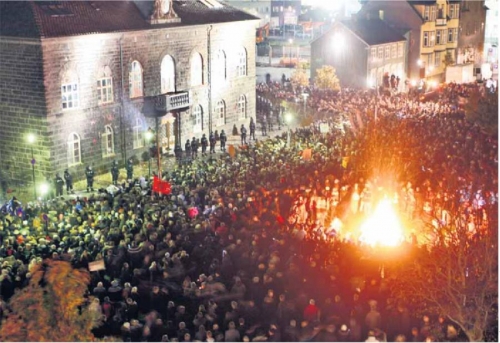 In just three years, Iceland went from collapse to revolution and back to growth. What can Spain and Greece learn from the Icelandic experience and its embrace of direct democracy?
In just three years, Iceland went from collapse to revolution and back to growth. What can Spain and Greece learn from the Icelandic experience and its embrace of direct democracy?Just two or three years after its economy and government collapsed, Iceland is bouncing back with remarkable strength. This week, the small island nation earned praise from foreign investors despite allowing its banks to collapse and refusing to pay back some of its debt — belying the dominant idea among Europe’s ruling class that bank failures and defaults necessarily engender disastrous economic consequences.
Now, in an historically unprecedented move, the government has decided to draft a new constitution with the online input of its citizens — essentially crowdsourcing the creation of Iceland’s real democracy. Rather than just involving voters at the end of the process through a referendum, the Icelanders have an opportunity, through social media, to be directly involved in the writing process. It’s the ultimate affirmation of participatory democracy. It’s Democracy 2.0.
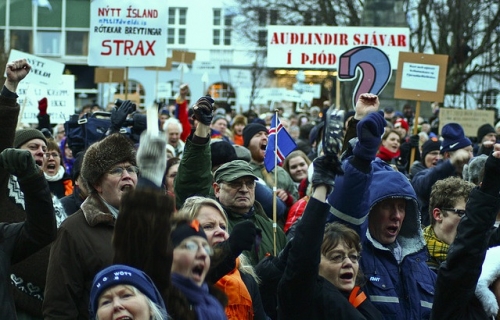 How did Iceland get from there to here? And what are the lessons for Europe’s troubled periphery?
How did Iceland get from there to here? And what are the lessons for Europe’s troubled periphery?Back in 2009, months after the greatest banking collapse in economic history, the people of Iceland took to the streets en masse to denounce the reckless bankers who had caused the crisis and the clueless politicians who had allowed it to develop. Quietly, as the world was busy watching the inauguration of President Obama, the people of Iceland overthrew their government and demanded a referendum on the country’s debt.
In the referendum, the Icelanders decided not to repay foreign creditors — Great Britain and the Netherlands — who had so foolishly deposited their savings in one of the world’s most over-leveraged banks, Icesave. In fact, the President had already vetoed the bill, so the referendum was largely symbolic, but still, the outcome of the vote (93 percent against repayment) was a watershed in the epic battle between people power and foreign financial interests.
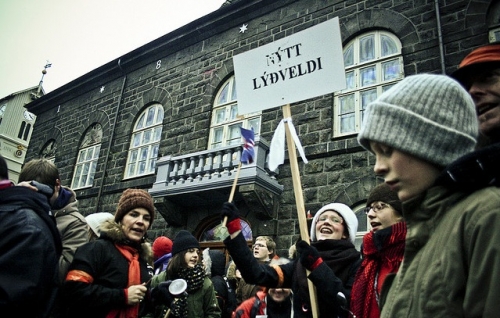 Yet what’s really interesting about the Icelandic case is not just the referendum, but the fact that the consequences of the outcome were far from being as disastrous as Europe’s self-proclaimed economic ‘experts’ had predicted. In fact, within just two years of the collapse of its government, Iceland is bouncing back rapidly, and is actually being rewarded for it by foreign investors. As the Wall Street Journal reported yesterday:
Yet what’s really interesting about the Icelandic case is not just the referendum, but the fact that the consequences of the outcome were far from being as disastrous as Europe’s self-proclaimed economic ‘experts’ had predicted. In fact, within just two years of the collapse of its government, Iceland is bouncing back rapidly, and is actually being rewarded for it by foreign investors. As the Wall Street Journal reported yesterday:Iceland’s first international bond offering since its spectacular economic and banking collapse late in 2008 has been snapped up by investors. The five-year $1 billion deal, yielding just under 5%, is a milestone in rebuilding confidence internationally and follows a turnaround in the economy, forecast to grow 2.25% this year.
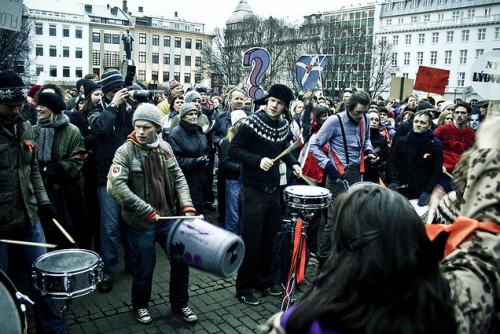 So it’s no surprise that Iceland became a rallying point for the ‘indignados‘ in Spain during the mass protests that broke out there last month. Spanish demonstrators could be seen carrying placards reading “Iceland is my goal” and “I think of Iceland.” The Icelandic model has also come to inspire the indignant protest movement in Greece, which is rapidly picking up steam. So what are Iceland’s main lessons for Europe’s troubled periphery?
So it’s no surprise that Iceland became a rallying point for the ‘indignados‘ in Spain during the mass protests that broke out there last month. Spanish demonstrators could be seen carrying placards reading “Iceland is my goal” and “I think of Iceland.” The Icelandic model has also come to inspire the indignant protest movement in Greece, which is rapidly picking up steam. So what are Iceland’s main lessons for Europe’s troubled periphery?First of all, make sure to read this excellent piece by Robert Wade, my former Professor at the London School of Economics, to understand how Iceland’s mistakes in the lead-up to the crisis were just an extreme version of what we did on the continent: capital account liberalization combined with financial deregulation and unprecedented political disinterest in the face of an epic bubble blowing up right in front of our eyes.
Wade helps us understand what not to do. But perhaps at this stage, it’s more interesting to find out what we should do. In this respect, one overwhelming lesson jumps out: while letting banks collapse and refusing to pay back foreign lenders certainly has negative consequences in the short run, those consequences are born largely by the reckless bankers who instigated the crisis in the first place.
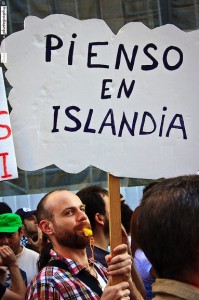 Instead of socializing the losses of the banks, making ordinary people pay for a crisis they never caused, the Icelandic model forced the bankers to pay for their own stupidity. During the Icelandic crisis, all three of the country’s largest banks collapsed. The government didn’t save them.
Instead of socializing the losses of the banks, making ordinary people pay for a crisis they never caused, the Icelandic model forced the bankers to pay for their own stupidity. During the Icelandic crisis, all three of the country’s largest banks collapsed. The government didn’t save them.Secondly, Iceland actually went after those responsible — both to enact justice and to set a precedent that this type of reckless speculation on the livelihoods of real people will simply not be tolerated in the future. Key figures in the banking sector have been arrested and a former prime minister has been formally charged. Treating reckless speculation as a crime is a crucial first step towards real democracy.
Thirdly, Iceland did what no one is supposed to be doing according to neoliberal dogma: just like Malaysia did — to the dismay of the IMF — during the East-Asian crisis of 1997-’98, the Icelandic government instituted capital controls to stem the outflow of hot money from the country in the wake of its banking collapse. The EU should have done the same (and can still do the same) to stem the outflow of capital from the periphery.
Fourthly, and this is obviously the most crucial lesson of all, the people of Iceland managed to sever the neoliberal straitjacket that had kept their politicians enthralled to the interests of the financial sector for so long. Through mass mobilization, the people toppled the government and instituted a radically new form of political participation. The crowdsourcing of the constitution is the most powerful symbol this new, real democracy.
As a result, the Icelandic people are now slowly but surely beginning to recover from the worst ever economic collapse of any country during peacetime. By contrast, countries like Greece, Spain, Ireland and Portugal are still struggling — and likely to remain mired in deep recession, if not outright depression, for years to come.
Untold suffering and hardship will fall on millions of people as the ECB, IMF and Germany continue to expect full repayment while imposing draconian (and ultimately counterproductive) austerity measures. A lost generation will flee these countries in a desperate search for opportunity. Countless lives, businesses, families and dreams will be destroyed. And for what? A handful of bankers who refuse to take a haircut?
What Iceland teaches us is that it need not be that way. The Atlantic currents and Arab winds have already reached the European periphery. It’s just a matter of time before the first government on the continent will be toppled by its people. Democracy 2.0 is on its way. No one can stop it now.
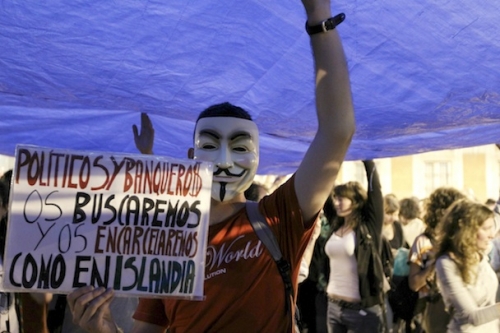
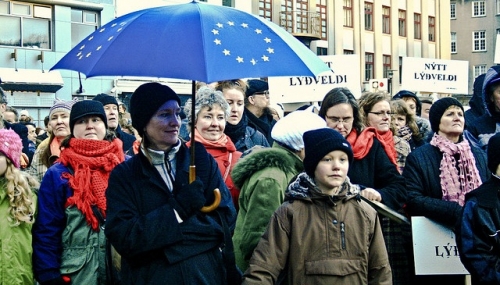
I always wondered why countries were so scared to simply say Hell no we won't pay. Argentina did it, Russia did it. Just default and let the bankers carry their own can. The investors will come back as Iceland has shown.
ReplyDelete